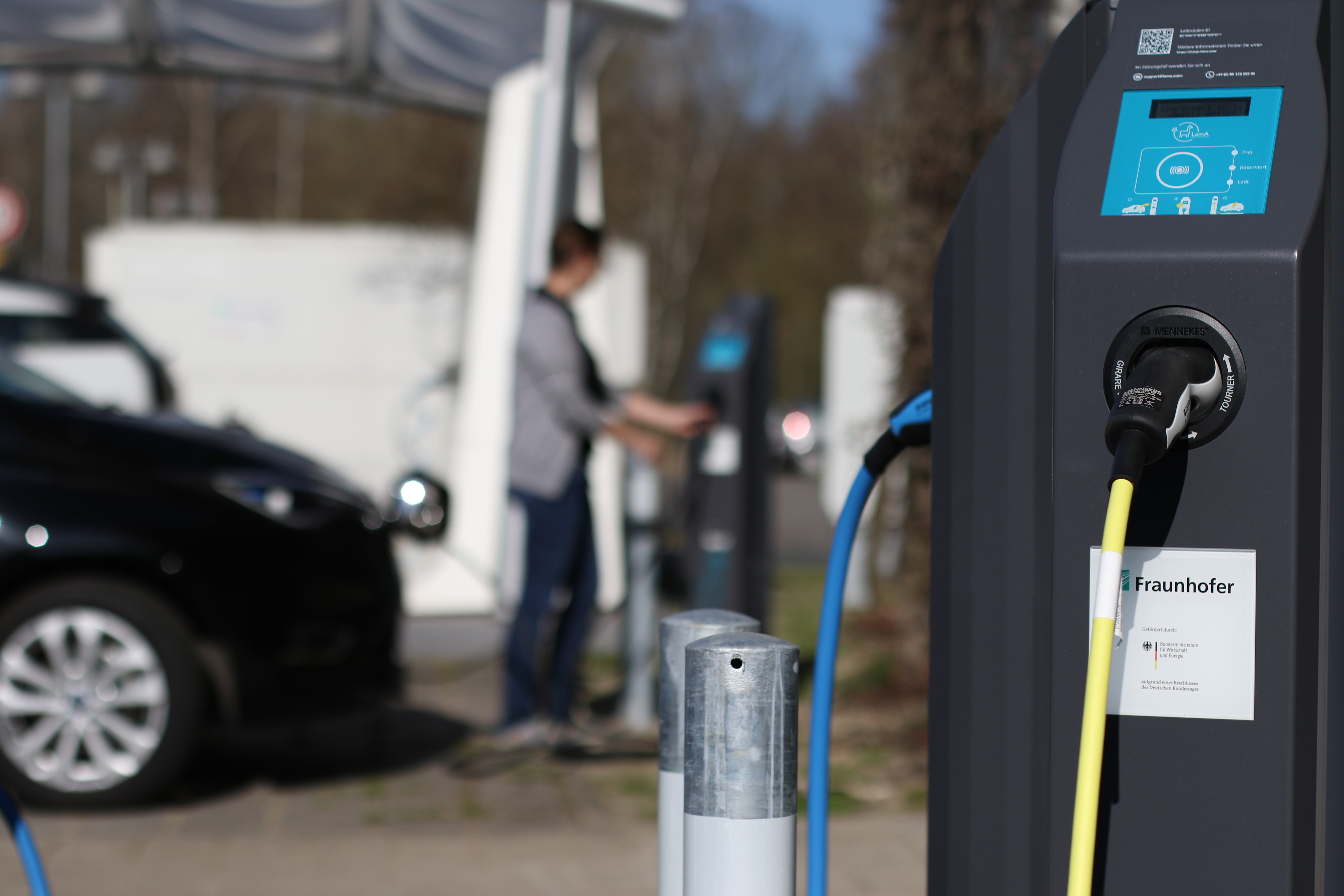Your grid connection does not allow fast charging?
At Fraunhofer IFAM, simulation calculations can be used to consider and analyse the effects on the entire energy system associated with the installation of charging infrastructure. With the help of these simulation calculations, we are able to find the individual optimum with regard to the selection and dimensioning of the system components. A large number of individual assumptions and future developments in the field of electromobility can be taken into account.
Effects of electromobility on existing (energy) systems
On the one hand, the development of charging infrastructure and the charging of electric vehicles increases the demand for electricity for operators. On the other hand, the peak power demand also increases, which is usually accompanied by a significant increase in grid charges or even an overload of the grid connection. Operators are therefore often concerned that the installation of charging infrastructure will lead to an increase in operating costs. This is often associated with great uncertainties, as the future charging needs and thus also the increases in electricity and power requirements cannot be foreseen in advance. The complexity of the decision-making process increases even further if, in addition to the installation of charging stations, other changes to the existing system - such as the installation of PV systems or stationary electricity storage systems - are taken into consideration.
Analysis of future needs
The impact of the installation of charging infrastructure on the energy system of the building depends in particular on the status quo as well as the future utilisation of the charging points. For this reason, the individual conditions such as the electricity load profile of the existing buildings, the mobility requirements and many other aspects are analysed and taken into account in the simulation and optimisation calculations. In this way, the effects associated with the construction and operation of the charging infrastructure as well as the constant conversion to electric vehicles can be analysed and the uncertainties associated with this change can be reduced.
Optimisation of the energy system
In addition - and in particular - the simulation results provide important information and insights to consider a wide range of options for minimising the (negative) impacts or optimising the overall system. Whether an expansion of the grid is necessary, whether the installation of battery storage or the limitation of charging power are sensible alternatives and whether PV systems are worthwhile depends on the future utilisation of the charging stations as well as on the objectives of the operators. The simulation and optimisation calculations carried out provide the basis for the demand-oriented selection and dimensioning of the various system components, whereby the focus can be on both economic and ecological objectives.
 Fraunhofer Institute for Manufacturing Technology and Advanced Materials IFAM
Fraunhofer Institute for Manufacturing Technology and Advanced Materials IFAM